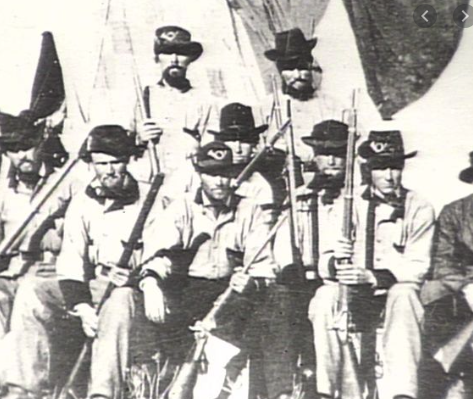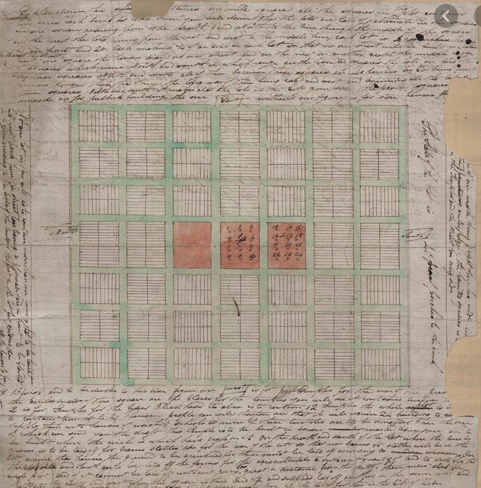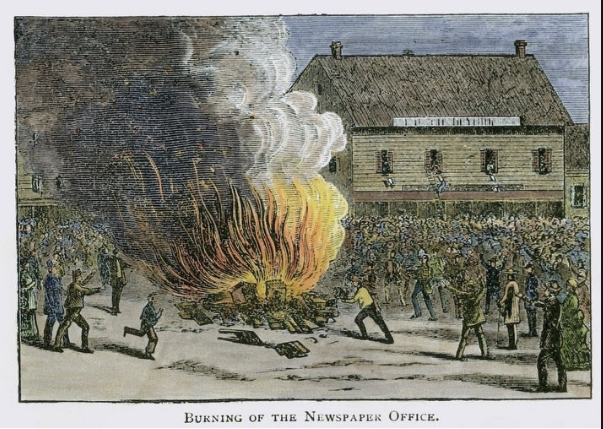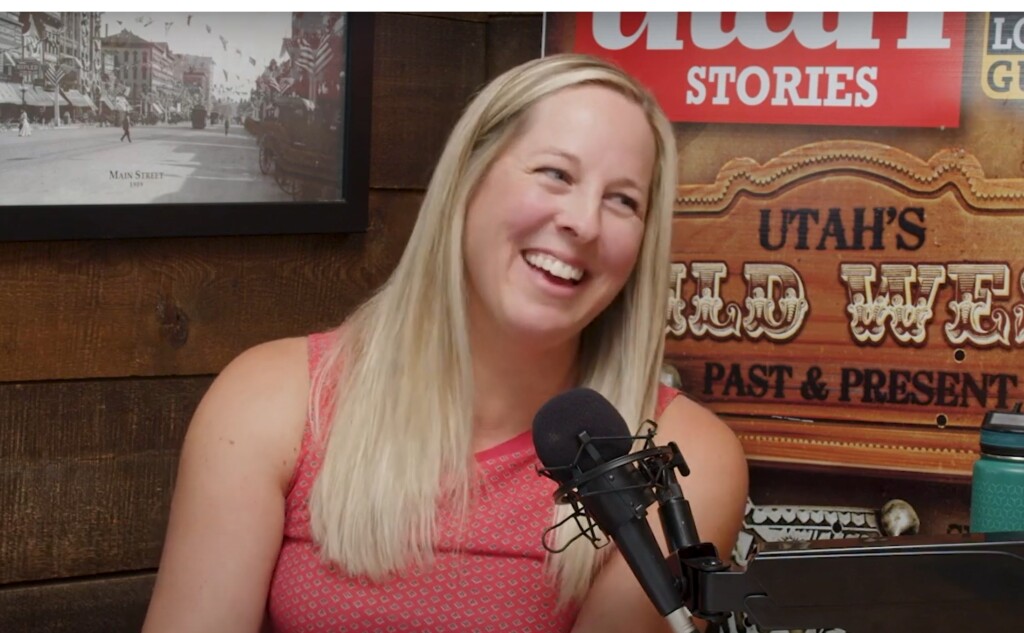The short answer is they were both presidential candidates accused but never convicted of inciting riots.
The Church of Jesus Christ of Latter-Day Saints founder Joseph Smith had a similar anti-establishment attitude to Trump when it came to federal power and how it is wielded in Washington. And Smith certainly wanted to “drain the swamp” but in a manner that is very different from Trump’s border wall and ends to burdensome regulation.
As a prophet and seer of The LDS Church, Joseph Smith was a highly unlikely candidate in the Presidential election in 1844, but like Trump, his followers were devoted more to him and to his vision for America than any particular political party. And Smith had a clear vision that was proving highly effective at gaining converts.
Certainly, the major difference between Trump and Smith is that Smith operated in the spiritual and religious realm and Trump in the business and political. But how Trump and Smith gained such devoted followers, willing to do almost anything for their leader is worth examining.
Like Trump, Joseph Smith was a rabble-rouser and didn’t fear the establishment’s political leaders. Due to his huge ambitions and populist ideas. Joseph Smith was very much a non-conformist and anti-establishment candidate for president in 1844. Why? Because Smith wanted to do nothing less than building the Kingdom of God on earth, a Theocratic empire. He wanted to edit the United States Constitution and make America into a theocracy. This actually came out just recently in a new book: The Kingdom of Nauvoo, the Rise and Fall of a Religious Empire. The New Yorker Magazine published an article last year about this new revelation that in fact, Smith wanted to challenge traditional American Democracy. Many believe that Trump also had aimed to challenge traditional American Democracy, but those claims were not founded on any actual facts.
Many of Smith’s most aggressive enemies were former Mormons who knew about his background. Smith was actually a treasure hunter and money digger. Many would call him a con-man. He would get hired to find buried treasure on people’s farms and properties. So Smith developed a lot of enemies.
The Forming of the Nauvoo Legion
In 1832, Smith realized that there was a growing animosity against his Book of Mormon and LDS Church members. He was personally tarred and feathered by a mob when the Saints’ headquarters were located in Kirtland, Ohio where they were forced to flee due to recurring violence with state officials offering little assistance. So the Saints developed their own army called the Nauvoo Legion. Nearly 3,000 young men were required to join to take up arms against foes if required.
According to the LDS Church History website the Nauvoo Legion was a state-certified militia of 2,000-3,000 men. Joseph Smith was the Lieutenant-General. Every able-bodied LDS man between the ages of 15 and 35 was required to join. The Legion frequently held parades that would attract residents from neighboring cities. Parades would offer demonstrations of marching soldiers in uniforms with weapons, where they would march in unison with drums. The Legion became the largest state militia in Illinois.

By 1844 The LDS Church had completely moved its headquarters from Kirtland to the town of Nauvoo, which means “beautiful city” in Hebrew. The small town and its surroundings were essentially bought and taken over by the Saints in their efforts to “build the Kingdom of God on earth.” But the kingdom could only become a reality if the Saints had enough members.
LDS missionaries stationed throughout England, Norway, Sweden, and Denmark were highly effective in gaining converts by teaching from the Book of Mormon especially to citizens of the UK.
Aiding their efforts they published a monthly newspaper in the UK: The Millenial Star (Messager and Advocate), beginning in October 1834, (to run for the next 130 years) the Star was essentially a marketing newspaper to help spread the LDS doctrine and gain converts.
Thousands of converts made the voyage across the Atlantic who were first taking their allegiance to the LDS Church while also becoming Americans. Did these new converts from Europe undermine the American vision of a democratic republic? Possibly. Smith didn’t believe in separation from Church and state he believed that America should be a theocracy rather than a democracy.
The Millenial Star was gushing with Latter-Day messages about theories concerning the connections between the Native American Indians and the lost tribes of Israel, the coming apocalypse, and the second coming of Christ. The missionaries and newspaper offered promises for Church converts in spiritual guidance and hope “righteousness, peace, and safety when destruction is near.”
The Early Mormon Economic System
But the very practical economic opportunities that the LDS Church was offering as well is often overlooked by historians.
Consider growing industrial Europe in the early 1830s. At this time, almost all European countries were still under Monarchies, which essentially kept residents stuck in their social caste and status. The “landed gentry” were nobles: Dukes, Earls, and Lords. They had peasant tenant farmers. Peasant farmers had really no hope of ever owning their own land.
England, Holland, Switzerland, and Germany were in the midst of the Industrial Revolution where many people were working in dirty cities, in dangerous factories, or in dirty unsafe coal mines. It wasn’t exactly a great existence, social mobility was rare to non-existent and it didn’t offer families hope that their children’s lives would be much better.
The Promise of Social Mobility
The American dream via the Latter-Day Saint Kingdom promised something much better. The Saints were offering the ability for converts to climb the social ladder by coming and immediately gaining free land or very inexpensive land. They could also enjoy both American’s freedoms and the Church’s highly efficient well-designed local economic system and the ability to own a 20-acre farm. The messaging and marketing through the missionaries, The Book of Mormon, and the Millenial Star were incredibly effective.
The Plat of Zion
The aspect of this story that I believe is overlooked is that the Saints were highly-effective community builders. A large part of their marketing efforts was in producing beautiful buildings including an amazing tabernacle and temple in Nauvoo. They also built very nice homes within very organized towns and lots. They “called” everyone to an essential job that they needed to fill, so there was no unemployment or homelessness.

The Saints even recruited converts from Europe who possessed the skills in the trades that they needed most. They convinced highly-skilled mill engineers who could build grist-mills, paper mills or lumber mills. And they had incredible stonemasons. They were very much into supporting their own industries and factories, so unemployment or homelessness were non-existent. This vision executed so well in Nauvoo, Illinois was causing the Saints Kingdom to challenge the population of one of America’s largest cities.
Nauvoo Challenging Population of Chicago
By 1844 Nauvoo was swelling with 12,000 residents and several square miles rivaling the size of the population of Chicago which had around 14,000. While Smith winning his bid for the Presidency was unlikely, the sheer voting block of the LDS community could likely have made Smith the Governor of Illinois.
But the anti-Mormon powers began coalescing to stop Smith and his followers;
The growing Nauvoo Legion militia and the swelling size of Nauvoo were certainly threatening to the powerful political leaders in Illinois. Smith was Mayor of Nauvoo, and his power base and thousands of members were gaining a significant foothold into American politics. The New Yorker Magazine writes in an article entitled “How Joseph Smith Challenged American Democracy” which outlines the revelations from a new book entitled “Kingdom of Nauvoo: The Rise and Fall of a Religious Empire on the American Frontier” (Liveright). By Benjamin E. Park
It was an unlikely candidacy: a thirty-eight-year-old mayor from the heartland who pitched himself as the solution to partisan gridlock, played up his military experience, talked often about his faith, and promised to end the country’s moral decline. He was fond of quoting the Founding Fathers, had an army of grassroots supporters, and came from a swing state.
The biggest revelations in the book are actually about how Joseph Smith believed the American Constitution was flawed and that it should be rewritten, and America should become a theocracy. Backing their claim that Smith had designs on rewriting the Constitution, from the New Yorker Article it reads:
This became clear in 2016 when the sealed minutes of the Council of Fifty were finally made public. Smith first convened the secret organization in the spring of 1844, and it immediately began drafting an alternative to the United States Constitution, rejecting democracy as a failed political project and outlining a theocratic kingdom to replace it.
What happened to Joseph Smith and his closest followers was unfortunate. Smith was running for president because he couldn’t find any political support for protection for his members. He was unable to curry favor among politicians, and he could see that mobs who were vandalizing members’ homes and farms: killing animals, burning their crops, and these mobs were acting with impunity, with local authorities standing by. Smith attempted to find allegiances first by taking his grievances to President Martin Van Buren at the time. But the President said that he could not offer the Saints protection nor redress for grievances.
The Nauvoo Expositor
Then not long after Smith announced his candidacy the Nauvoo Expositor published their first and only issue. The newspaper was a vitriolic anti-Mormon newspaper that attempted to dissuade support for the Mormons and point out that Joseph Smith was secretly practicing and endorsing polygamy. The paper was started by a man who had been excommunicated from the Church named William Law. As Mayor of Nauvoo, Smith ordered the destruction of Law’s type and the printing press. He made this announcement publicly, and Smith’s followers quickly and effectively followed his orders.
The destruction of private property was of course against the law, and not even the Mayor of a City with 20,000 followers was above the law. But to be fair, I found something from a website indicating that Smith did not unilaterally order the destruction of the Nauvoo Expositor, but it was also approved by his City Council, from which apparently there were some non-Mormons.

Then Smith decided he would flee to the Rocky Mountains and begin a new kingdom. But then he changed his mind and returned to turn himself in the County seat of Hancock and was placed with his brother, Willard Richard and John Taylor, and awaited a hearing in Carthage Jail.
Joseph Smith was accused of inciting a riot that caused the destruction of the printing press of the Nauvoo Expositor. But he would never stand trial, instead, he was shot and killed while jumping out of the window of the single-story jail attempting to flee a mob of 50 men who painted their faces black. Whether the fall killed Smith or the bullets from the guns of the mob, is uncertain. But in June 1844 Joseph Smith was laid to rest by his followers.
One of History’s Mysteries: Why Didn’t Joseph Smith order his army to protect him?
But there is a mystery surrounding Smith’s death, that Latter-Day Saints call martyrdom: if Smith had an army of 2,000-3,000 men that could be immediately called into duty, why did he go to the Carthage jail and not have more protection? Smith’s armed and trained Nauvoo Legion could have certainly saved him.
There are a few answers that he didn’t ask for their support, but this is one of history’s mysteries. There is obviously a lot more to this story.
—————————————-
Want to Support Utah Stories in Finding the Answers?
If you would like to support Utah Stories crack team of investigators in solving this mystery subscribe to this channel and leave a comment below, you can subscribe to Utah Stories magazine if you also want to get an incredibly informative magazine delivered to your door each month.
I would like to see 1500 likes with this video, if I get this I will do everything I can to solve this interesting and important mystery and why it appears that Joseph Smith did not do everything in his power at all to save his own life, but instead it seems he willingly went to this jail knowing that his death was likely imminent.
Millennial Star — Vol 1 Issue 1 BYU Library
The Fair Mormon: on the Destruction of the Nauvoo Expositor printing press






